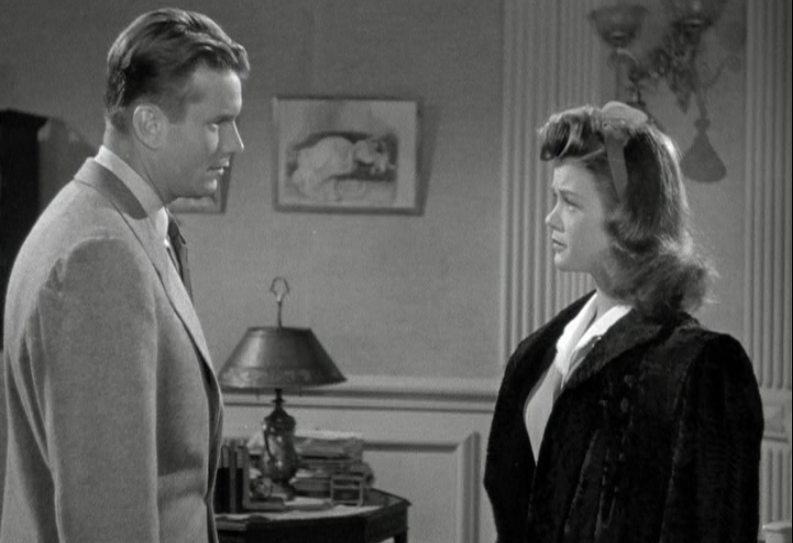Movie Review: Cat People (1942) directed by Jacques Tourneur
Marine engineer Oliver Reed (Kent Smith), like many New Yorkers, enjoys visiting the Central Park Zoo. Today he found a new attraction, a pretty fashion sketch artist hanging around the black panther cage. She turns out to be a Serbian immigrant named Irena Dubrovna (Simone Simon) who evidently learned English from a French person, since that’s the accent she has. The two quickly discover a mutual interest, and within months are married.

Well, legally married. Irena isn’t ready for physical intimacy just yet. It seems that centuries ago, her part of Serbia came under the control of the Mamelukes (note: the Mamelukes at no time controlled any part of Serbia in real history) and by the time King John of Serbia came along to free them, the villagers had taken to evil witchcraft. Supposedly, some of the most evil witches escaped the ensuing purge. But their bloodlines were cursed. Any female descendant of one of those witches will turn into a cat if she experiences “passion,” and become murderous, especially towards the man she is involved with. The villagers believed that Irena’s mother was one of those descendants, since her husband died mysteriously a short while after the wedding, and thus Irena fears that she too is of the Cat People.
While sympathetic and initially willing to put up with her fear of intimacy, Oliver considers the whole notion poppycock, as does his coworker Alice Moore (Jane Randolph), who’s been nursing a secret crush on Oliver. They ignore mounting circumstantial evidence, such as the very cat-like woman who calls Irena “sister” out of nowhere. But eventually, it’s clear that something is going on. So Irena is persuaded to meet with psychiatrist Dr. Louis Judd (Tom Conway). It does not go well, as Dr. Judd thinks Irena’s problems are all “in her head” and also seems to have an unprofessional personal interest in her.
Irena’s fears and jealousy mount, and tragedy awaits.
This movie is an excellent example of how to use creative restrictions to craft a superior product. The Hays Code forbid a wide range of subject matter, particularly dealing with sex, so a plot that revolves around unresolved sexual tension is a natural. And the tiny budget meant that the filmmakers had to use the absolute minimum of special effects. So for most of the film, the “monster” is merely hinted at with strange noises and shadows, and paw prints that turn into shoe prints. We never actually see Irena turn into a panther, or vice versa. The way the film is shot and cut, however, keeps the audience invested in finally figuring out what is really happening.
The music is well done, and the performances solid. I especially liked Alec Craig as a zookeeper who considers black panthers a sign of the devil, as foretold in Revelations.
While it’s relatively subtle, there are definite touches showing the Americans as prejudiced about “foreign” things. Oliver and Alice clearly mean well, but are shockingly closed-minded about the traditions and lore of Serbia, which means they ignore clear signs that Irena is correct. Oliver won’t even try gumbo!
While the movie came out in 1942, it’s clearly set before World War Two began. There’s absolutely no reference to current events. Another indication of when the movie was made is that there’s a lot of smoking, including the lighting of cigarettes as social ritual.
Content note: Dr. Judd acts unprofessionally towards his patient Irena, and even kisses her against her will.
Overall: A classic of the suspense/horror genre. Less experienced viewers might find the “hide the monster” technique boring, and want more “action”, so they might prefer the remake.


As the sequel, released two years later, has to take place more than SIX years later, it’s likely that these events are meant to be taking place in the early 1930s, or possibly even the 20s.